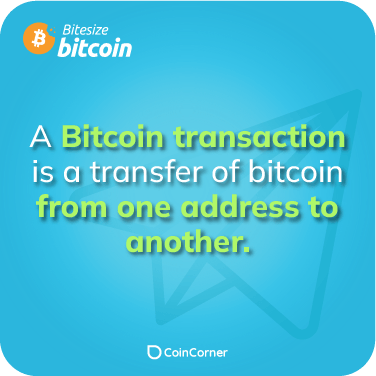What is a bitcoin transaction?

A Bitcoin transaction is the core mechanism through which ownership of Bitcoin is transferred from one party to another on the Bitcoin network. It represents the foundational process by which value is exchanged and recorded in the Bitcoin blockchain. Here's a detailed look at what a Bitcoin transaction entails:
10. Transparency and Privacy:
While Bitcoin transactions are transparent and recorded on the public blockchain, they do not directly reveal the identity of the participants. Transactions are pseudonymous, identified only by Bitcoin addresses.
1. Sender and Receiver Addresses:
In a Bitcoin transaction, there are typically two primary participants: the sender and the receiver. The sender is the individual or entity sending the Bitcoin, while the receiver is the intended recipient.2. Transaction Inputs:
The sender initiates the transaction by referencing one or more unspent transaction outputs (UTXOs) in their possession. These UTXOs are essentially previously received Bitcoins in the sender's wallet.3. Transaction Outputs:
The sender specifies one or more recipient addresses and the amount of Bitcoin they want to send to each address. These are referred to as transaction outputs. One of the outputs is usually the receiver's address, and any remaining Bitcoin not allocated to outputs is considered the transaction fee, which is collected by miners for including the transaction in a block.4. Digital Signatures:
To prove ownership of the UTXOs being spent, the sender creates a digital signature using their private key. This signature demonstrates that the sender has the authority to spend the specified Bitcoins. It's essential for transaction security and verification.5. Transaction Verification:
The transaction, along with the digital signature, is broadcast to the Bitcoin network. Nodes on the network verify the transaction's validity by checking that the signature is correct and that the UTXOs have not been spent previously.6. Inclusion in a Block:
Valid transactions are included in a new block by miners. Miners compete to solve a cryptographic puzzle, and the first one to solve it gets to add a block of transactions to the blockchain. This process is known as mining.
7. Blockchain Recording:
Once a block is added to the blockchain, the transaction is considered confirmed. It is permanently recorded on the public ledger, the blockchain, and becomes a part of Bitcoin's transaction history.8. Confirmation:
The number of confirmations a transaction receives depends on how many subsequent blocks are added to the blockchain. The more confirmations a transaction has, the more secure it is, as reversing the transaction becomes increasingly difficult.9. Transaction Fee:
To incentivize miners to include their transactions in a block, the sender typically attaches a transaction fee. This fee is paid in Bitcoin and rewards miners for their efforts. Transaction fees may vary depending on network congestion and the urgency of the transaction.10. Transparency and Privacy:
While Bitcoin transactions are transparent and recorded on the public blockchain, they do not directly reveal the identity of the participants. Transactions are pseudonymous, identified only by Bitcoin addresses.
Share this fact:





